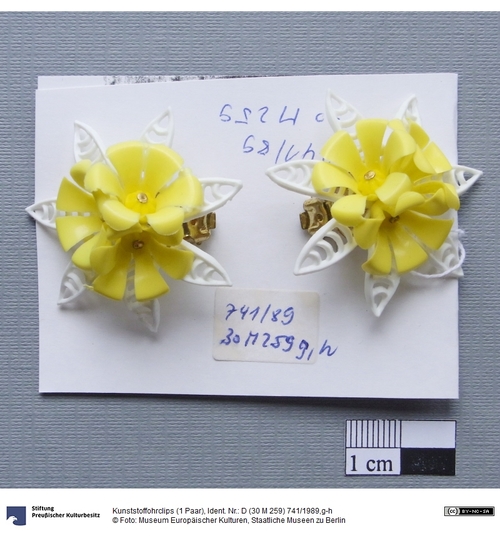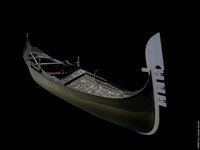Die Ohrclips bestehen aus drei gelben Blüten und sieben weißen Blütenblättern. Sie sind aus PVC hergestellt und stammen aus der ersten Nachkriegskollektion der Fa. Lindner aus Neugablonz nach 1945.
Deutschstämmige Umsiedler aus Gablonz an der Neiße (heute Jablonec nad Nisou) gründeten nach dem Zweiten Weltkrieg den Ort Neugablonz bei Kaufbeuren. Die Siedler brachten besondere Fähigkeiten in der Schmuckherstellung mit und bereits nach kurzer Zeit entstand eine blühende Industrie, die eine Vielzahl von Berufsbildern hervorbrachte. Neugablonz wurde zum Zentrum der deutschen Modeschmuckindustrie.
en

